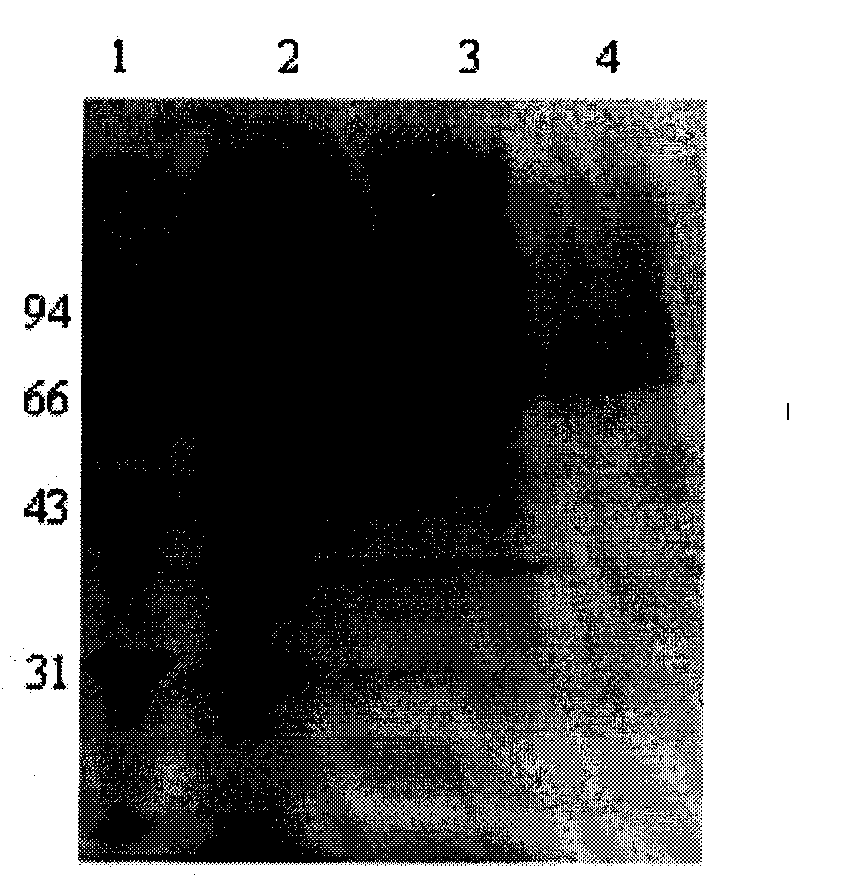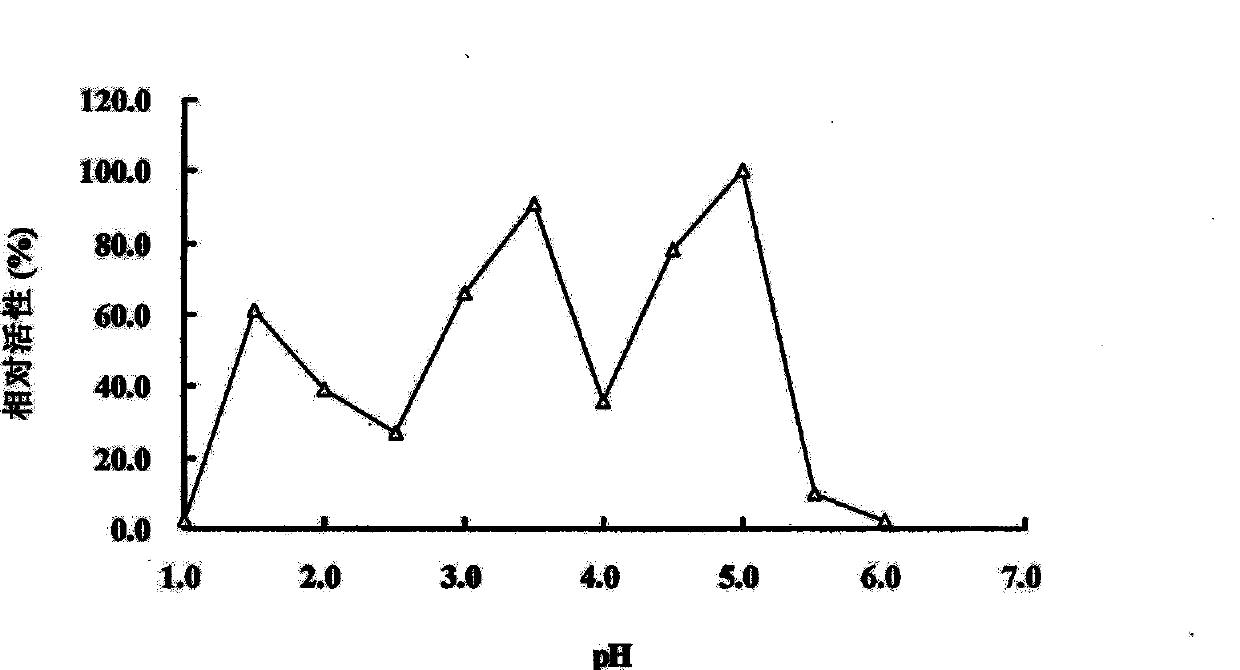Acidophil Beta-glucanase GLU7A and gene and application thereof
A dextranase and gene technology, applied in the field of genetic engineering, can solve the problems of dextranase activity differences, achieve high enzyme activity stability, reduce material viscosity, and improve feed digestibility and metabolism.
- Summary
- Abstract
- Description
- Claims
- Application Information
AI Technical Summary
Problems solved by technology
Method used
Image
Examples
Embodiment 1
[0038] Example 1 Acidophilic fungus Bispora sp.MEY-1 and its enzyme production characteristics
[0039] A sample of uranium mine wastewater from a mine in Jiangxi was cultured in potato juice medium, and then spread on enzyme-producing medium ((NH 4 ) 2 SO 4 5g / L, KH 2 PO 4 1g / L, MgSO 4 ·7H 2 O 0.5g / L, FeSO 4 ·7H 2 O 0.01g / L, CaCl 2 0.2g / L, 1% dextran, 1.5% agarose, pH 2.5) on a plate, cultured at 30°C for 5-6 days, a transparent circle can be seen on the enzyme-producing medium plate. Proved to have dextranase activity.
[0040] The acidophilic fungus Bispora sp.MEY-1 was preserved on May 19, 2008 in the General Microbiology Center of the China Committee for the Collection of Microorganisms (Datun Road, Chaoyang District, Beijing, Institute of Microbiology, Chinese Academy of Sciences, 100101), and its preservation number For: CGMCC No.2500.
Embodiment 2
[0041] Example 2 Cloning of the glucanase-encoding gene glu7A from the acidophilic fungus Bispora sp.MEY-1
[0042] Extraction of acidophilic fungus Bispora sp.MEY-1 genomic DNA:
[0043] Filter the mycelium cultured in liquid for 3 days with sterile filter paper, put it into a mortar, add 2mL of extract, grind for 5min, then put the grinding solution in a 50mL centrifuge tube, lyse in a water bath at 65°C for 20min, and mix every 10min. Homogenize once and centrifuge at 10,000 rpm for 5 min at 4°C. The supernatant was extracted in phenol / chloroform to remove impurity proteins, and then an equal volume of isopropanol was added to the supernatant. After standing at room temperature for 5 minutes, centrifuge at 10,000 rpm for 10 minutes at 4°C. The supernatant was discarded, and the precipitate was washed twice with 70% ethanol, dried in vacuum, dissolved by adding an appropriate amount of TE, and stored at -20°C for later use.
[0044] According to the conserved sequence of g...
Embodiment 3
[0049] RT-PCR Analysis of Example 3 Glucanase Gene
[0050] Extract the total RNA of Bispora sp.MEY-1, use reverse transcriptase to obtain a strand of cDNA, and then design appropriate primers (glu7AF: 5′-ATGGCAGTGTTCACTCTGACCGTGG-3′, glu7AR: 5′-CTAATTCCAACCGCCAGAGCC-3′) to amplify The single-stranded cDNA obtains a cDNA sequence encoding glucanase, amplifies the product and recovers it for sequencing.
[0051] By comparing the genome sequence and cDNA sequence of glucanase glu7A, it was found that the gene has a 60bp intron, the cDNA is 1281bp in length, encoding 427 amino acids, and the first 19 amino acids at the N-terminal are possible signal peptide sequences. BLAST results showed that it had the highest sequence similarity with endo-1,4-beta-glucanase from Aspergillus oryzae. The highest amino acid similarity is 58%; the highest nucleotide similarity is 60.3%. It was proved that the gene encoding glucanase isolated and cloned from Bispora sp.MEY-1 was a new gene.
PUM
 Login to View More
Login to View More Abstract
Description
Claims
Application Information
 Login to View More
Login to View More - R&D
- Intellectual Property
- Life Sciences
- Materials
- Tech Scout
- Unparalleled Data Quality
- Higher Quality Content
- 60% Fewer Hallucinations
Browse by: Latest US Patents, China's latest patents, Technical Efficacy Thesaurus, Application Domain, Technology Topic, Popular Technical Reports.
© 2025 PatSnap. All rights reserved.Legal|Privacy policy|Modern Slavery Act Transparency Statement|Sitemap|About US| Contact US: help@patsnap.com



